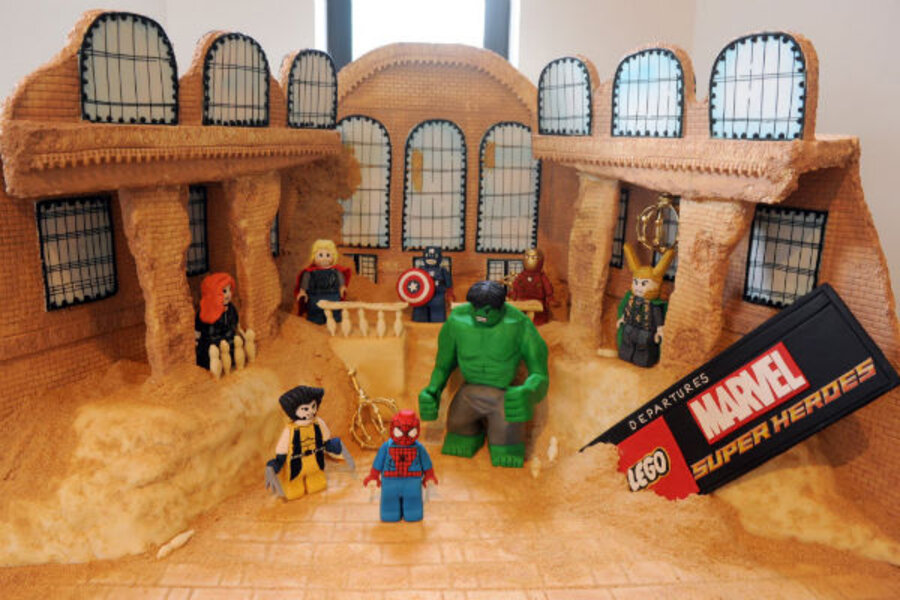Super Hero Squad: Mom is recruiting her 9-month-old with Little People
Loading...
Toy buying for my nine month-old has escalated beyond simple rattle and crinkle car seat toys into the wide world of smaller handheld toys that I will inevitably trip on in the the middle of the night on my way to the bathroom.
I’ve decided to upgrade his toy collection to include Little People, those pudgy, smiling plastic figures that fit like pegs into little toy tractors, buses, cars, and airplanes, and directly into my son’s mouth.
I found Little People figures modeled after DC Super Heroes and Disney Princess characters, and chose the superhero toys immediately, avoiding the princess figures altogether. These are my son’s first action figures (nevermind the fact that Little People look more fit to snuggle you into submission rather than resort to violent force), and I want to buy toys that encourage heroic, powerful characters.
Why did I automatically choose superheroes? As I watched him chew on Little Wonder Woman, I wondered – If we are careful to avoid pushing princess fantasies with fairytale endings to our daughters (protecting them from the “Disney Princess effect” discussed here), should we also watch telling our sons that they need super powers to save the world?
I don’t want to be a buzz kill. I myself love superheroes and I can’t wait to encourage my son to have an active imagination which celebrates characters bigger than reality that help save the day. I am sure we will embrace our fair share of superhero make believe too, complete with underwear on the outside of the pants and homemade masks and capes to furnish his creativity.
Plus, superheroes, more often than not, seem to be positively defined for their strength, courage, and sacrifice for the greater good. Australian blogger Damon Young, comparing the superhero make-believe of his childhood with his daughter’s princess dreams, notices the following:
"But my fantasies were all heroic: fists, feet, flying. Great powers and great responsibilities, and all that guff. This is not simply about physical violence – it is also about moral virtues, including bravery, constancy, temperance, and so on. The classic superhero – and his kindred heroes in Star Wars or Lego – has a public role, and the strength and ethical character to fulfill it."
While I agree with Young, I do want to make sure my son understands that it is the character of the superheroes and not just the fighting, flashy suits, bulging muscles, and…ahem….tights that make them powerful.
I want to reinforce that the alter egos for each of these superheroes also impact their superhuman powers for the better. It is the men and women behind the masks that make the heroes, and they have their vulnerabilities, just like us. Marvel comics addressed this issue in 2012 when it modeled a character after a boy with a hearing disability. After the boy’s mother approached the comic publisher with concerns from her son that superheroes don’t wear hearing aids, Marvel created a character named “Blue Ear” who helps save the day with the help of his own hearing aid.
For now, I think the affable Little People figures modeled after caped crusaders will be a good jumping off point for what I expect to be my son’s long relationship with superheroes. As he grows, I will do my best to help him identify his own strengths that make him powerful and able to take on the challenges of the world. I’ll teach him that you can make the world a better place through Clark Kent’s journalism, Bruce Wayne’s philanthropy, or Peter Parker’s love of science.
And I will teach him that the courage to wear your underpants on the outside builds character too.
The Christian Science Monitor has assembled a diverse group of the best family and parenting bloggers out there. Our contributing and guest bloggers are not employed or directed by the Monitor, and the views expressed are the bloggers' own, as is responsibility for the content of their blogs. Lane Brown blogs at Mudlatte.com.







